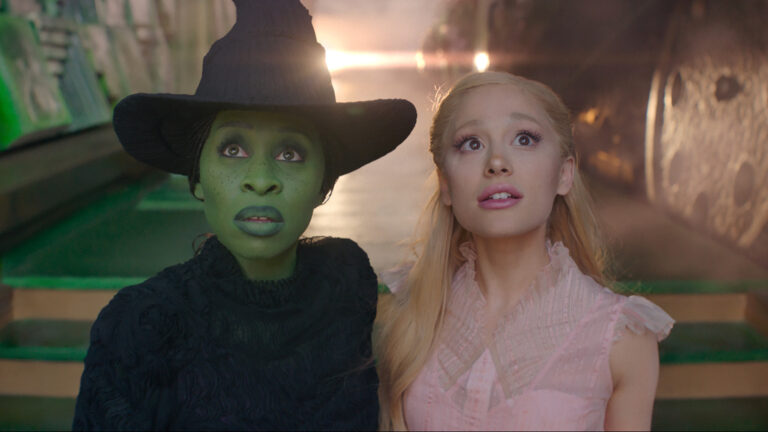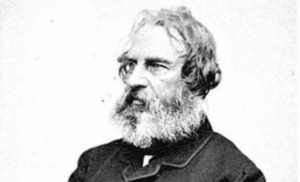I first encountered Frances FitzGerald in the 1970s when I read her Pulitzer Prize-winning book on the Vietnam War, Fire in the Lake, to which I still refer when I lecture on the war. In addition to the Pulitzer, the book also won the Bancroft Prize for best historical work as well as the National Book Award. Its immense success catapulted FitzGerald to the top level of journalist-historians, where she has remained ever since.
In the 1980s, she became interested in the Christian Right. Among other types of research, she spent time at Jerry Falwell’s Thomas Road Baptist Church and Liberty University in Lynchburg, Virginia. I suspect that interest launched her latest book, because it seems her animating research question is something like: Where did the fundamentalists and evangelicals of the Christian Right come from? The Evangelicals: The Struggle to Shape America is her answer.
Exhaustive History of the Christian Right
FitzGerald has read most of the scholarship on evangelicals and synthesized it into a masterful narrative. Her bibliography of more than 250 books would make a good preliminary reading list in the PhD program here at Baylor University. Paragraph by paragraph I could say to myself, There’s Marsden, McLoughlin, Kidd, Dochuk, Hatch, Marsden again, me, Diamond, Carpenter, Green, Noll, and so on.
She begins the story, appropriately, with the 18th-century revivals of the First Great Awakening, the birthplace of American evangelicalism. She demonstrates that from the beginning the movement was primarily religious and theological, with political overtones, and quite diverse. But FitzGerald wants to move quickly to more recent times and so reaches “Liberals and Conservatives in the Post-Civil War North” by page 56 and “The Fundamentalist-Modernist Conflict” of the early 20th century by page 95.
FitzGerald has read most of the scholarship on evangelicals and synthesized it into a masterful narrative.
Throughout this sometimes riveting narrative, FitzGerald demonstrates a keen grasp of evangelicalism’s intricacies. By way of just two examples, she outlines the nuanced differences between separatist fundamentalists and more broadly evangelical believers in the early 20th century. Even more impressive, when she gets to “the thinkers” of the Christian Right—Rousas Rushdoony and Francis Schaeffer—she explains the subtle differences between J. Gresham Machen and Cornelius Van Til in order to show the influences in Rushdoony’s thought. Moreover, she’s careful to point out that while many in the Christian Right were influenced by Rushdoony, few adopted his central argument that America’s destination will be, and should be, the institutionalization of Old Testament law. Instead, the Christian Right went with Schaeffer’s Christian Manifesto rhetoric of attempting to restore America’s “Christian base”—but no theocracy.

The Evangelicals: The Struggle to Shape America
Frances FitzGerald
FitzGerald’s chapter on Falwell and the Moral Majority starts on page 291, and so for the final 344 pages of narrative the book becomes the most exhaustive history of the Christian Right since William Martin’s With God on Our Side: The Rise of the Religious Right in America (1996). But FitzGerald has the advantage of another two decades of history to cover since Martin’s book first appeared. Her argument in brief is that the Christian Right, having started in the Reagan era, declined in the 1990s, then took off again and peaked during its all-too-close alliance with George W. Bush. The precipitous decline in Bush’s fortunes during his second term—caused by the debacle in Iraq, the mishandling of Hurricane Katrina, and, finally, the economic crash of 2008—dragged the Christian Right down with the president. In short, the alliance that seemed so beneficial and brought such hope for a restored Christian America ended in disaster for the Christian Right. As FitzGerald aptly puts it,
To many Democrats and moderate Republicans, the White House and the Republican leadership had seemed to have become a captive of the Christian right. To many evangelicals, the opposite seemed to be the case: the Christian right had become a function of Republican politics. (534)
The hope that Barack Obama would be a one-term interlude came crashing down with his unexpected re-election in 2012, after which Christian Right leaders spoke in both apoplectic and apocalyptic terms.
New Evangelicals
The years since Bush left office, especially Obama’s second term, have seen the rise of the “new evangelicals” (not to be confused with the Neo-evangelicals of the 1950s), who are skeptical of the old Christian Right’s approach to politics and especially wary of the degree to which the Falwell-Robertson-Dobson generation aligned evangelicalism with the Republican Party. Chief among the new evangelicals is Russell Moore, president of the Southern Baptist Convention’s Ethics and Religious Liberty Commission.
It seems to be part of FitzGerald’s subtle thesis that the Christian Right transformed evangelicalism from a religious to a political movement—and that this was not a good thing. There is something to this, but we need to keep in mind, as she acknowledges, that even at its height only about 20 percent of evangelicals identified with the Christian Right. When evangelicals think and talk about politics, and especially when they vote, the vast majority sound and act like the Christian Right, from which they take their political cues.
But I’ve always maintained that the typical evangelical isn’t all that political. Rather, the important things for most evangelicals are: (1) living godly lives; (2) raising their children to be committed, evangelical Christians; (3) being active in their local churches; and (4) evangelizing their neighbors. They talk about issues like abortion and gay marriage in Sunday school, and on Election Day about 75 percent to 80 percent of them dutifully vote Republican, even if a pagan like Donald Trump is at the head of the ticket. They may even put a sign in their yard for the Republican congressman in their district. But the vast majority of evangelicals don’t march in the street, write letters to their congressmen and senators, run for the local school board, or attend Christian Right rallies. They’re too busy being Christians, so they leave that to the Falwells, Roberstons, and Dobsons of the world.
This is where FitzGerald’s book falls down a bit. In covering the Christian Right so thoroughly, The Evangelicals perpetuates the myth that evangelicalism and the Christian Right became synonymous. In part, FitzGerald seems to want to show that this was the case and that it was an unfortunate aberration, given the nearly three centuries of rich and robust evangelicalism that predated the Christian Right. On the other hand, however, part of the reason we need good history is to show that perceptions, especially those perpetuated by the media, need correction—that there’s more to a movement than its most visible, loud, and sometimes outrageous public figures.
Part of the reason we need good history is to show that perceptions, especially those perpetuated by the media, need correction—that there’s more to a movement than its most visible, loud, and sometimes outrageous public figures.
When FitzGerald gets to the new evangelicals who broke ranks with the Christian Right after 2008, she acknowledges, “These dissenters came from an evangelical constituency largely unknown to the rest of the country” (544). She even cites Mark Noll as suggesting they had been there all along “in international aid agencies, colleges and seminaries, denominations and independent churches” (544).
While not mentioning them by name, John Piper, Tim Keller, and The Gospel Coalition would fit this new evangelical category. These and others have succeeded in carving out a larger niche in the wake of the demise of the Christian Right. “In other words,” FitzGerald writes a few pages later, “the Christian right had done its work all too well: it had managed to convince Americans that all evangelicals, if not all Christians, belonged to their movement. And many evangelicals wanted out” (559).
So in a history like this, one might ask, why not tell us what these other evangelicals were doing while the Christian Right captured the Republican Party and sucked up all the attention of the media?
Three Missing Groups
Attention to at least three evangelical submovements might have corrected this deficiency.
First, what were evangelical women doing during the era of the Christian Right? There is now a substantial body of scholarly literature on the ways women are empowered by evangelical women’s organizations. I’m thinking primarily of R. Marie Griffith’s fine book, God’s Daughters: Evangelical Women and the Power of Submission; Susan K. Gallagher’s Evangelical Identity and Gendered Family Life; Brenda Brasher’s Godly Women: Fundamentalism and Female Power; and James Ault Jr.’s Spirit and Flesh: Life in a Fundamentalist Baptist Church. Ault’s book provides a well-rounded picture of what life is like in a church pastored by a Falwell disciple and peopled by members who wanted the Christian Right of the 1980s to succeed. Still, only a few in the congregation Ault studied (actually lived in) became thoroughly immersed in politics, and many thought their pastor was too political.
A second relatively apolitical submovement that could have provided a window into non-Christian Right evangelicalism would be Promise Keepers. While portrayed in the media as just part of the Christian Right, Promise Keepers was more accurately an interracial men’s movement where white Republican evangelicals apologized to and hugged black Democratic evangelicals while both groups promised to be better husbands and fathers. It was only indirectly political, but it was highly gendered, as evangelical history often is.
Third, and much more recently, while FitzGerald does a nice job tracking the splintering of the Christian Right and the rise of the new evangelicals, she does almost nothing with the Emerging Church Movement, which existed outside the Christian right for the entirety of its existence (1995cc—2012cc), if indeed the movement is over now.
It’s not that FitzGerald fails to acknowledge there have been evangelicals since 1980 who do politics differently than the Christian Right. Relying on the sociological work of John C. Green and the insightful analysis of religion writer Mark Pinsky, she aptly characterizes the current state of evangelicalism. The movement is divided between a Bible Belt manifestation in which certain social issues loom large, and Sun Belt evangelicals who are middle-class suburbanites not as animated by young-earth creationism or posting the Ten Commandments in public spaces. For the latter, the culture shock has worn off, and, as Green writes, “hard-edged politics no longer appeals to them” (569). Think Rick Warren here.
Both groups, however, still care about abortion and gay marriage. In this way FitzGerald accounts for the non-Christian Right diversity I’m suggesting above. But these important differences, and many important non-Christian Right evangelical submovements, get little specific attention. We don’t know what the other 80 percent of evangelicals were doing when Falwell, Robertson, and Dobson were on the march.
Making Evangelicalism Evangelical Again
Most of FitzGerald’s book is eminently fair, balanced, and detached, even in early coverage of the Christian Right. And she provides some really significant insights. For example, she argues Falwell presents a key turning point that produced Christian Right evangelicalism. Whereas fundamentalist and evangelical activists of the 1950s (like Billy Graham) warned that communist infiltration would subvert America’s moral base, Falwell’s jeremiad reversed that view. As FitzGerald writes, “The decline of American economic and military might owed to the growing moral decay and godlessness of American society” (308). Or, as she quotes Falwell himself, “We are economically, politically, and militarily sick because our country is morally sick” (308).
While that might sound like a Jonathan Edwards sermon from the 18th century, “it wasn’t, for the sin lay not in the souls of his congregation,” FitzGerald observes, “but in outside forces” (308)—secular humanism first among them. Or, another significant insight:
To follow [Pat Robertson’s] career is thus not just to see the evolution of the Christian right but to follow the currents and cross-currents of the most inventive and unstable of religious movements in modern American history. (369)
I ask, how many secular journalists, or even scholars in the academy, have that level of insight into the history of evangelicalism?
Still, the closer FitzGerald gets to the present, the more she crosses the line from understanding and explanation to exasperation and bewilderment. You can forgive the snarky tone when she covers the scandals of Jim and Tammy Faye Bakker. But then she puts scare quotes around “religious freedom” when talking evangelical fears that bakers and florists will be forced to participate in gay weddings in the wake of the Obergefell decision. FitzGerald seems oblivious to inconsistency when secular liberals criticize the Christian Right for its manifold attempts to use the power of the state to encourage religion—while those same critics of the Christian Right endorse the power of the state to coerce evangelicals to participate in a marriage ceremony. Hence, “religious freedom” gets scare quotes as an example of “laws that discriminate against LGBT.”
How many secular journalists, or even scholars in the academy, have that level of insight into the history of evangelicalism?
These criticisms aside, FitzGerald’s book is for the most part admirable. I believe she’s correct in arguing that the Christian Right skewed public perception of what evangelicalism is and who evangelicals are. If she’s correct when she writes about the post-2010 years, “The Christian right was no longer a movement but simply a faction within the Republican Party” (623), she implies that perhaps evangelicalism can become more fully evangelical again, both in its essence and its public perception. She seems to think that would be a good thing. I do too.




























